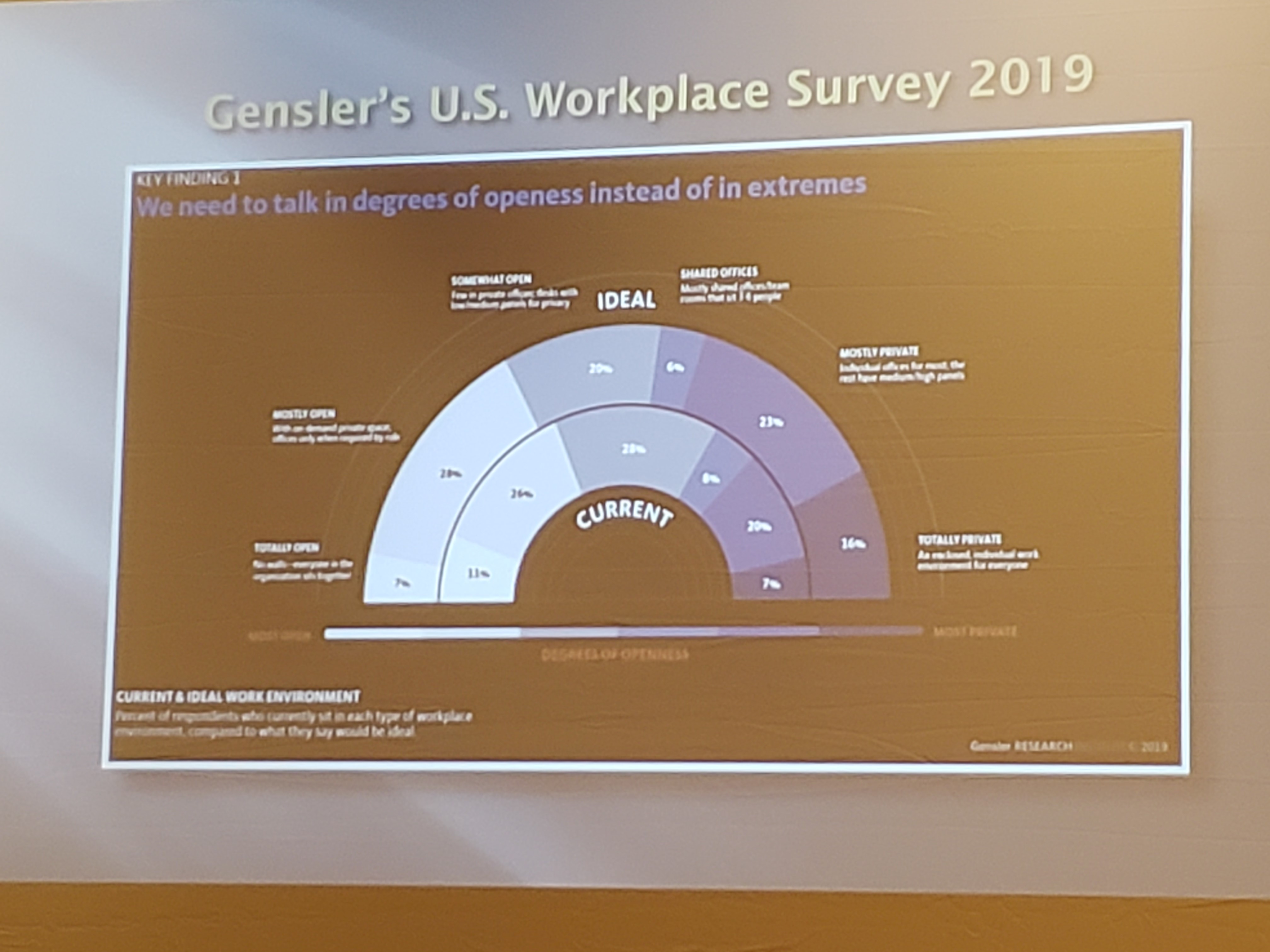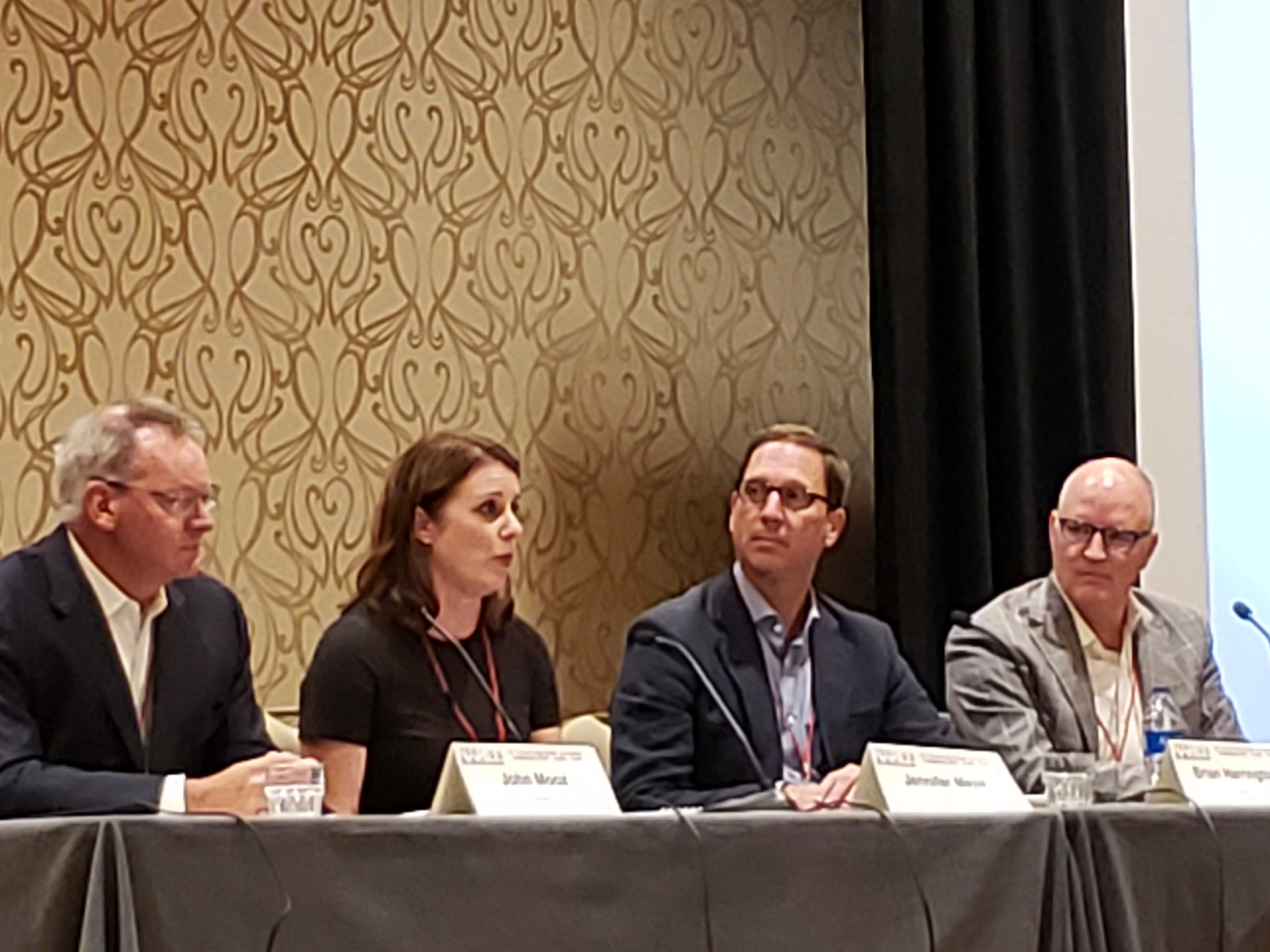NAREE Report: The Next Evolution of Flexible Space
Open-space strategies are expanding in coworking and permanent office configurations alike, as tenants demand new options for work, as well as the incorporation of natural light and other wellness features.
With the war for talent stronger than ever in the face of record low unemployment and a growing job market, look out for the next stage of workplace evolution, marked by a rise of coworking space and flexible alternatives within more permanent space.
“There’s no doubt the creation of flexible space is here to stay,” declared Brian Harrington, chief experience officer with Hana, a new flexible (he doesn’t like the term “coworking”) space provider that will launch its first location next month in Dallas, with backing from CBRE. He was speaking at the National Association of Real Estate Editors 2019 conference in Austin on Tuesday. Such space will comprise more than 10 percent of commercial real estate within the next 10 years, he predicted.
READ MORE: Hines Throws Hat Into Coworking Ring
Flexible, or coworking, space providers are taking a page from the hospitality market to attract small or short-term tenants, and that approach is also working in more permanent space. That’s why Woodbine Development is applying its hotel background to office properties, according to Kristopher Hartman, vice president in the Dallas-based company. The key to that, he said, is “placemaking and storytelling” well enough to make both tenants and their employees feel like your space is where they want to be. Hotels, he noted, have done a very good job of delivering this message.
More options in offices
Building flexibility into permanent spaces means providing a greater range of options than ever, according to Jennifer Mejia of Gensler, which in April produced a study on open space preferences. That means closed or private spaces for individual work as well as open space for collaboration.
 It also means green spaces and maker spaces that contribute to wellness and productivity, rather than the foosball tables and yoga rooms that were previously viewed as employee attractions (technology companies are more likely to have shifted priorities because they have already incorporated gaming rooms). “No tech” spaces are also becoming more important—not necessarily nap pods but instead someplace that an employee can go to take a break from their phone and computer, whether to clear their head or have a conversation.
It also means green spaces and maker spaces that contribute to wellness and productivity, rather than the foosball tables and yoga rooms that were previously viewed as employee attractions (technology companies are more likely to have shifted priorities because they have already incorporated gaming rooms). “No tech” spaces are also becoming more important—not necessarily nap pods but instead someplace that an employee can go to take a break from their phone and computer, whether to clear their head or have a conversation.
(Read further coverage from NAREE: Counselors Unveil Top 10 Issues for 2019)
Hines, which just announced a partnership with flexible workspace providers Industrious and Convene to launch Hines Squared, a venture that will operate flexible workplace centers within its office buildings, is also focused on incorporating flexible spaces into its more traditional office space. Texas Tower, which Hines is developing with Ivanhoe Cambridge in Houston, with a design by Pelli Clarke Pelli, incorporates a wide variety of hospitality and experiential elements. Noting corporate desire for access to natural light and green space, Senior Managing Director John Mooz noted the cantilevered bays on each level that can be renovated to incorporate a stairway or even a conference room and let in plenty of light. In addition, the project is located in and around three big parks, and incorporates three urban gardens within the building. In addition, mechanical elements have been moved upstairs to free 20,000 square feet on the first floor for experiential retail.
With the office now viewed as a tool to manage a firm’s destiny, according to Mooz, such flexibility “is the wave of the future,” Mejia said.
(Hear more from Jennifer Mejia about flexible workplace design.)








You must be logged in to post a comment.